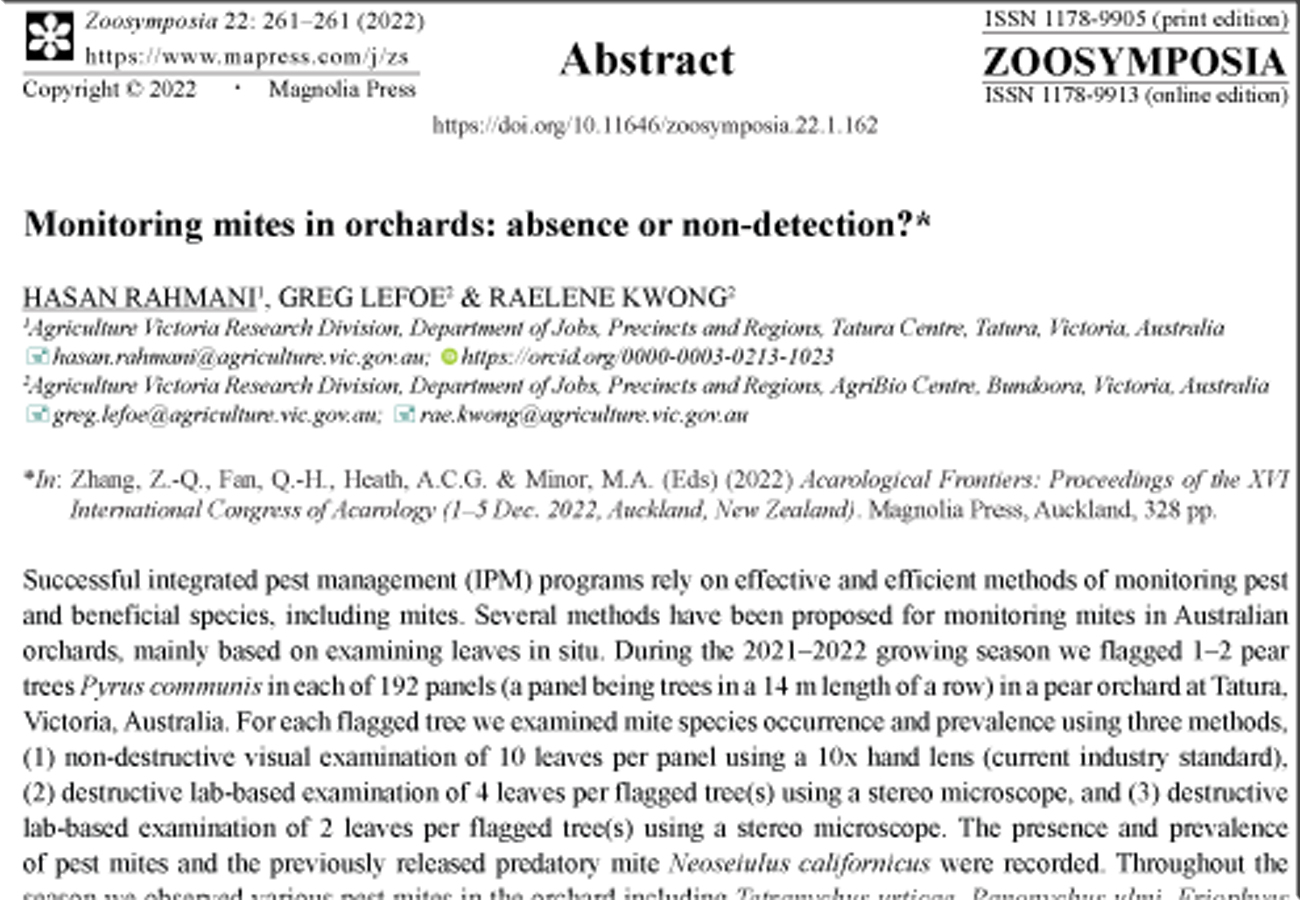Abstract
Successful integrated pest management (IPM) programs rely on effective and efficient methods of monitoring pest and beneficial species, including mites. Several methods have been proposed for monitoring mites in Australian orchards, mainly based on examining leaves in situ. During the 2021–2022 growing season we flagged 1–2 pear trees Pyrus communis in each of 192 panels (a panel being trees in a 14 m length of a row) in a pear orchard at Tatura, Victoria, Australia. For each flagged tree we examined mite species occurrence and prevalence using three methods, (1) non-destructive visual examination of 10 leaves per panel using a 10x hand lens (current industry standard), (2) destructive lab-based examination of 4 leaves per flagged tree(s) using a stereo microscope, and (3) destructive lab-based examination of 2 leaves per flagged tree(s) using a stereo microscope. The presence and prevalence of pest mites and the previously released predatory mite Neoseiulus californicus were recorded. Throughout the season we observed various pest mites in the orchard including Tetranychus urticae, Panonychus ulmi, Eriophyes pyri, and Bryobia rubrioculus and the predatory mite N. californicus. However, the number of species detected and the prevalence of detected species on leaves were dependant on sampling method used. Both destructive sampling methods, method (2) and method (3), performed better than the current non-destructive industry standard in terms of species detection and prevalence. The largest differences were seen during the early stages of infestation for mite species other than E. pyri. Early detection of certain mite species is important because it can provide a more accurate estimate of the starting point for Cumulative Leaf Infested Days (CLIDs) calculations, resulting in better informed management decisions. Importantly, detection and prevalence results were similar for methods (2) and (3) despite the greatly reduced sampling effort (time required) for method (3), and overall sampling effort for method (3) was similar to that required for method (1). Therefore, in terms of both accuracy and sampling effort, method (3) outperformed the other two methods we trialled. An obvious limitation of method (3) when compared to current practice is the requirement for a stereo microscope and access to a laboratory or similar facility. Therefore, the method may be more useful for appropriately trained consultants who monitor pests in orchards on behalf of growers. Another limitation with our study was that it was limited to a single growing season in one pear orchard. We therefore recommend further research to validate our observations, and to support recommendations for growers and consultants.
References
-


